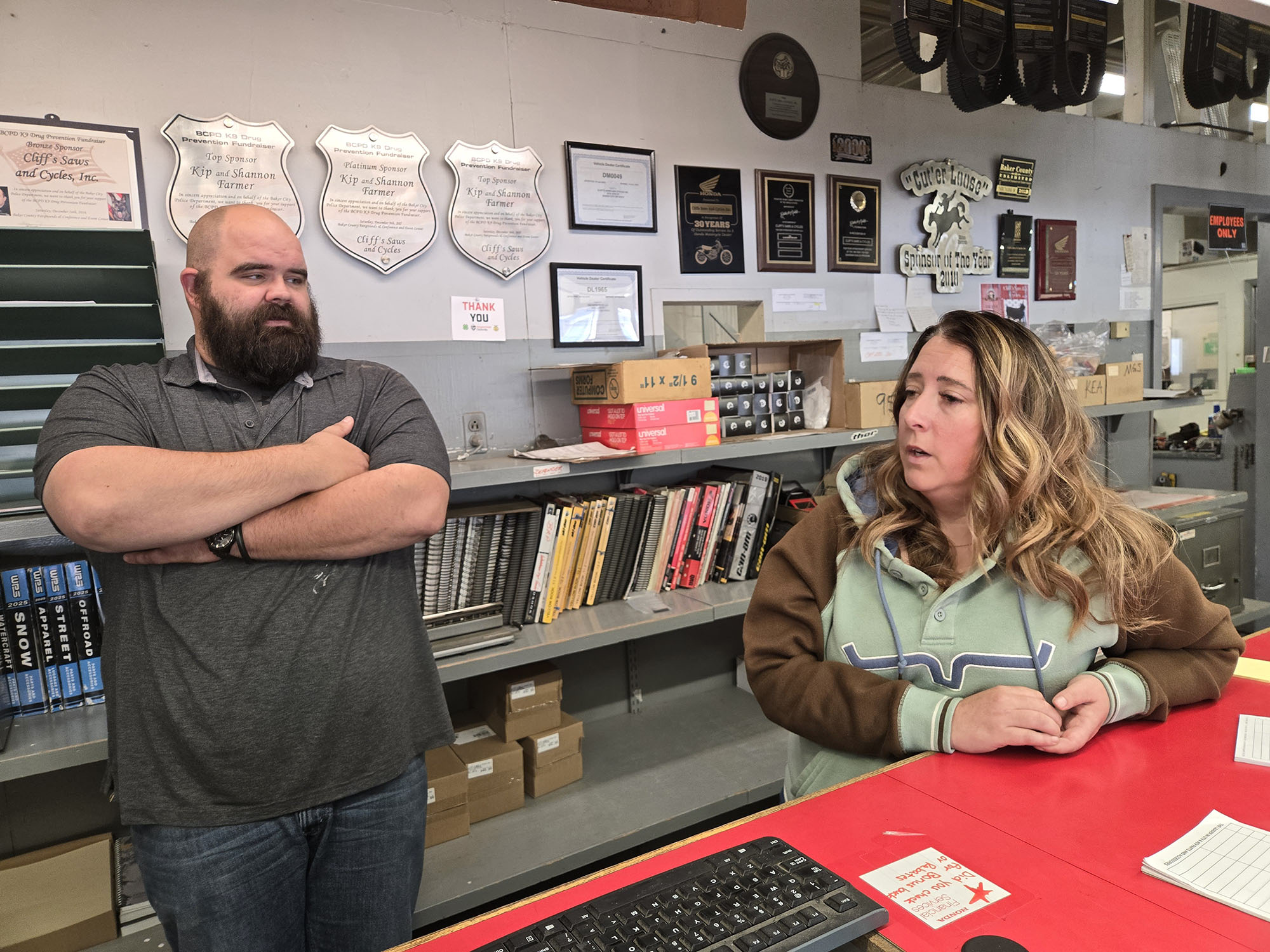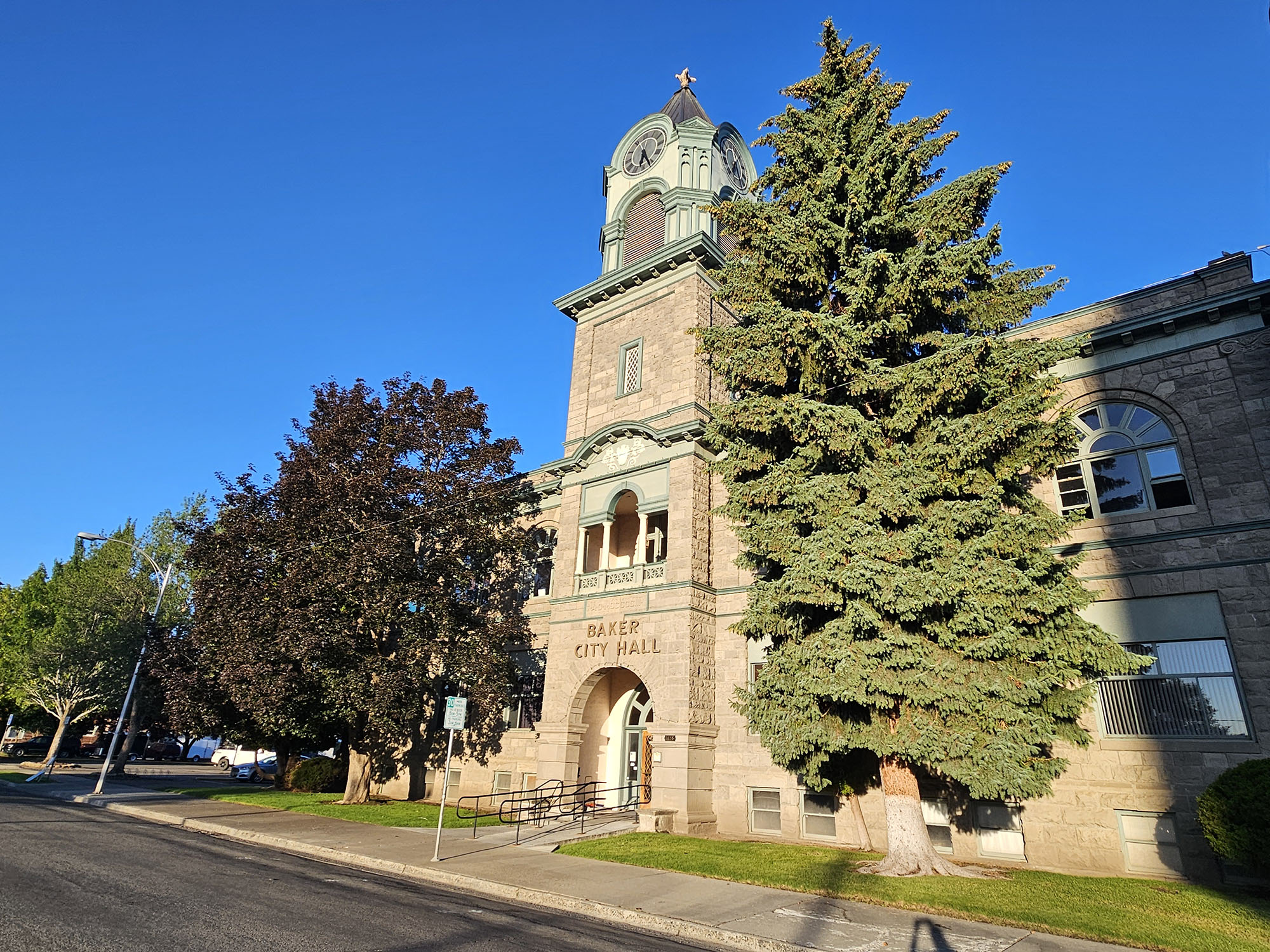COLUMN: Talking trees with a Baker City man whose career is devoted to forests
Published 11:14 am Thursday, June 12, 2025


Arvid Andersen seems oblivious to the raindrops pelting his hat as he stands in a soggy forest a mile or so south of the Anthony Lakes Highway.
Andersen is focused on the trees.
It’s an eclectic mixture typical of the Blue Mountains.
Trending
Ponderosa pines and Douglas-firs and tamaracks.
This land belongs to someone else, but Andersen feels a strong kinship with the ground just the same.
He was walked the whole of the 160 acres.
He wasn’t out for a hike.
Andersen was working.
The 72-year-old Baker City resident is a professional forestry consultant.
Trending
He designed a logging plan for brothers Randy and Ron McBride, each of whom owns half of this property near Antelope Peak.
In 2016, loggers took 194 truckloads of logs from the acreage.
On this moist June morning, nine years later, the only obvious evidence that loggers have been here are the scattered stumps.
And even those aren’t easy to pick out amid the knee-high, brilliant green pinegrass, the huckleberry bushes and other foliage run riot.
It seems certain that anyone, whatever their knowledge of forestry, would, if taken to this spot, would deem this a proper forest, with all the characteristics the word implies.
Which is precisely what Andersen hopes to achieve when he takes a job.
I accompanied Andersen on the morning of June 11.
We visited two properties in Baker County that were logged to his specifications, as approved by the landowners.
Andersen repeated, as a sort of mantra, that it’s possible to accomplish what might sound like contradictory goals — make the forest healthier even while cutting enough trees to make a profit for the property owner.
To fulfill both objectives, he said, the forester has to consider each tree.
The task can be complicated, to be sure.
The details — trees per acre, crown ratios — are daunting to a layperson like me.
But I can grasp the basic concept that Andersen explains.
“You want to leave the healthiest trees — the best of the best,” he said.
Those trees — the tall, straight pines and firs and tamaracks we’re looking at on the McBride property — boast an attribute that Andersen repeats often.
Resilience.
These healthy, robust trees are more likely to repel insects and diseases that can afflict trees weakened by factors such as overcrowding. When too many trees are competing for the finite supplies of water and sunlight and nutrients in the soil, they all tend to suffer.
Just as a malnourished person is more susceptible to illness, so is it with trees.
Moreover, the remaining trees will grow faster, Andersen said.
Randy McBride told me the forest, after the 2016 logging, is “tremendously better.”
Prior to 2016, the forest was overcrowded, the trees growing slowly or not at all, many of them sickly and susceptible to fire.
“It’s so much nicer now,” McBride said.
As with any conversation regarding forests, Andersen and I talked quite a lot about fire.
Particularly at the first of the two stops, in a primarily ponderosa pine forest that burned in the Cornet-Windy Ridge Fire south of Baker City in August 2015.
Sparked by lightning, it was the biggest blaze, at 104,000 acres, in the county’s history until last summer’s Durkee Fire.
(Although the Durkee Fire burned primarily sagebrush, grass and juniper, the Cornet-Windy Ridge Fire also blackened large expanses of timber.)
Under Andersen’s guidance, the forest was logged in 2003.
When the fire swept through a dozen years later, about 75% of the trees survived, he said.
A post-fire salvage logging yielded 70 loads of logs, Andersen said.
(The owners of the property asked that their names not be used.)
Andersen contrasted the fire’s effects on the private land with what happened on the adjacent Wallowa-Whitman National Forest.
On the national forest side of a barbed wire fence marking the boundary, there are more trees, most of them ponderosas and most of them dead, scorched by the flames almost a decade ago.
The private forest more resembles a park, the pines widely spaced, their boles straight, their bark the distinctive red-orange of a mature ponderosa.
Andersen points to one of the tallest trees around, a tamarack.
This would have been valuable to cut and sell. But Andersen said the property owners agreed with him that keeping such a fine tree — tamaracks are quite resistant to fires — was worth more.
His pride was palpable as he surveyed both that forest and, a couple hours later, the McBride property.
The key difference, Andersen said, is that private landowners must comply with the Oregon Forest Practices Act, while logging on national forests (as well as public land managed by the BLM) is regulated by a host of federal laws. Public logging is also subject to objections and, potentially, lawsuits.
Andersen laments in particular the federal rule — it’s not, technically, a law — that prohibits cutting of live trees larger than 21 inches in diameter on federal land east of the Cascades.
He considers that an arbitrary threshold that in some cases can hamstring federal agencies from designing timber sales that he believes would benefit forests and make them less vulnerable to insects, disease and fire.
One place in particular vexes Andersen — Baker City’s watershed.
Andersen is a former Baker City Council member, and during his tenure he advocated for a Forest Service project intended to reduce the wildfire risk in the 10,000-acre watershed, which the agency manages.
Although Jeremy Aujero, Whitman District ranger, last week signed a decision for a project in the watershed that includes commercial logging, hand-thinning of trees, and prescribed burning, Andersen believes the effort would be more effective if not for limits such as the 21-inch rule.
A major wildfire in the watershed — similar to the 2015 Cornet-Windy Ridge blaze or to many other fires that have scorched hundreds of thousands of acres in Oregon over the past decade — likely would force the city to build a water-filtration plant. Cost estimates are as high as $20 million.
There is one obvious point regarding how private and public forests are managed.
Private land is, well, private, with the rights that go along with ownership.
Public forests, by contrast, belong to all of us. And although it’s implausible to think we can incorporate, with equal consideration, the millions of opinions about what’s best for these forests, federal law requires that agencies such as the Forest Service at least have a go at doing so.
Andersen argues that these agencies, who are supposed to represent public interests, are overly solicitous of those who argue that we should cut few publicly owned trees — or none at all — in places such as the city’s watershed.
He notes that the decision Aujero signed for the watershed project includes a ban on cutting trees larger than 21 inches.
Trying to balance the myriad purposes that public forests serve, and the far greater number of ideas about how best to go about this, is quite a conundrum.
But standing beside Arvid Andersen, and listening to the soft sigh of rain on the trees, is a compelling experience.
I could reach no other conclusion but that this man who chooses which trees to cut cares even more about the ones left behind, to soak in the good rain and bask in the sunshine.











